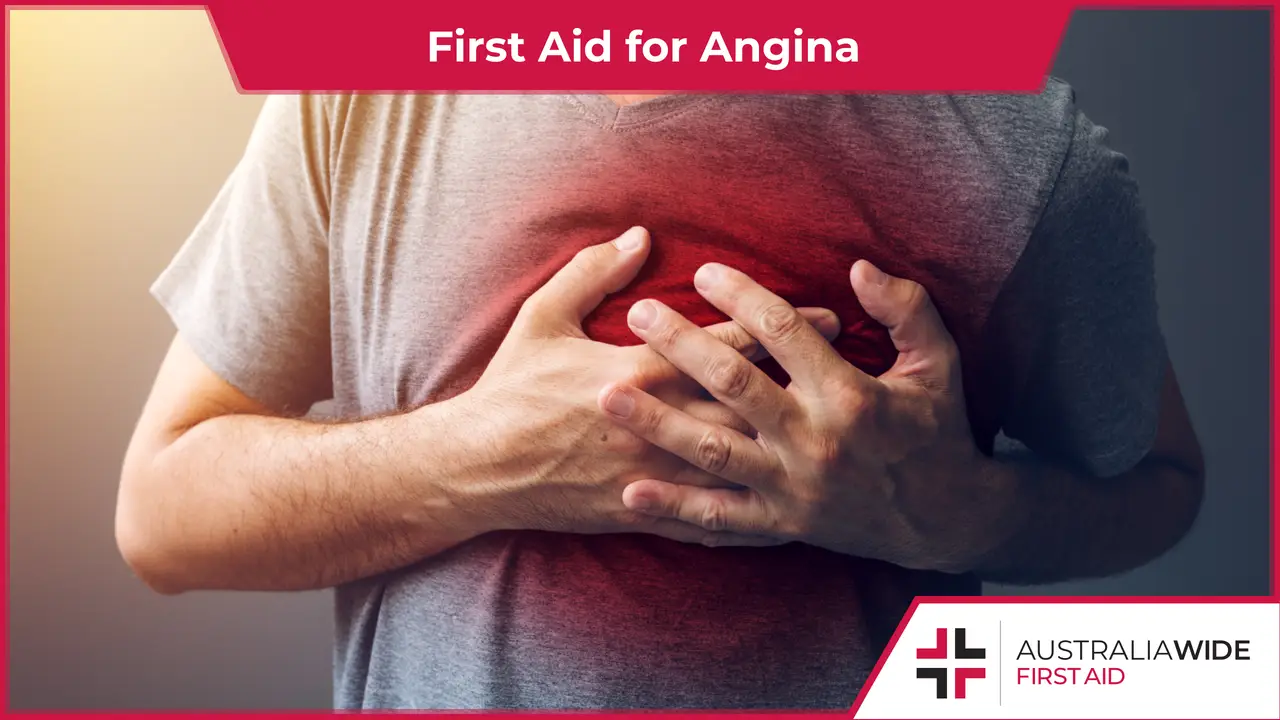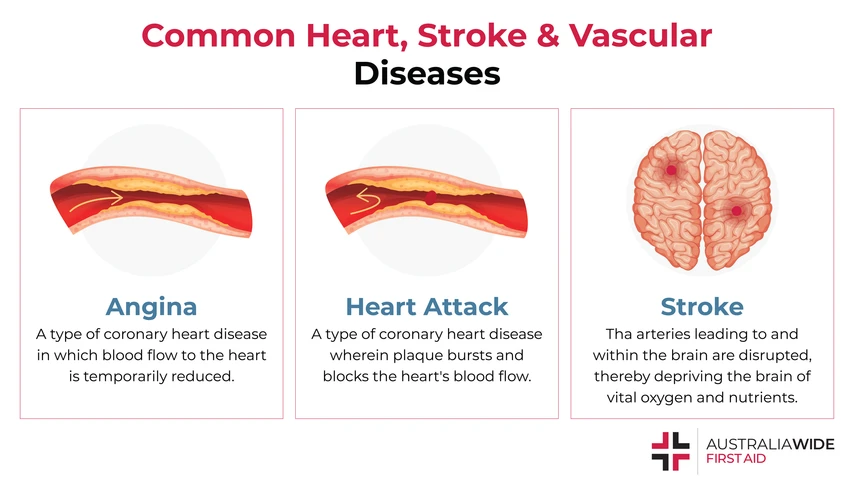First Aid for Angina


Angina is a temporary chest pain or discomfort that may give a heavy or tight sensation.
Angina is caused by a lack of blood and oxygen to the heart muscle. This is usually due to fatty substances clogging the arteries supplying the muscle, and is a form of coronary heart disease.
Both angina and heart attacks are major clinical forms of coronary heart disease. Angina results in the pain and discomfort feeling in the chest and unlike a heart attack, it won’t cause permanent damage to the heart muscle.
It is estimated that over half a million Australians aged over 18 had coronary heart disease in 2020-21. It is the leading cause of disease and death in Australia.
If you are interested in learning more about how to recognise and respond to angina, enrol in one of our first aid courses:
Head to our website to find a course near you - we have locations all across Australia.
Angina is usually a symptom, or a warning sign of coronary heart disease. If the coronary arteries, the arteries supplying blood to the heart muscle, are narrowed or clogged up due to fatty substances, the heart muscle is unable to receive sufficient blood or oxygen.
When the heart muscle needs the extra energy to pump, for example in strenuous exercise or emotional stress, angina is most often experienced.
If you or someone you know is experiencing such pain, while it may not be immediately life-threatening, it is important to get it checked out by a doctor. Angina can be managed both with medicine and lifestyle changes.
The pain in the chest caused by angina is usually described as unpleasant, sharp, and uncomfortable. There are four different types of angina.
Risk factors that can increase the chance of angina and coronary heart disease include:
Angina has similar signs and symptoms to a heart attack. Some casualties do not feel ‘pain’, just an unpleasant sensation or discomfort in the chest.
Angina is not constant as blood flow to the heart muscle is usually able to keep up with the heart’s demands. It is only when the heart is under stress and requires more blood to function that angina is experienced.
During an angina attack, the casualty may experience:

As angina does not damage the heart muscle, it comes and goes with only temporary pain and does note cause lasting injury.
It should be treated as a warning sign for a heart attack and coronary heart disease, which can be a much more serious condition. Seek medical advice from your doctor for management and treatment.
Angina is usually relieved by rest. When rest does not bring rapid or effective relief, prescribed medication can be used, including those sprayed under the tongue.
Treat as if for a heart attack if symptoms are severe, get worse quickly, or last longer than 10 minutes:
Lifestyle changes, such as a healthy diet, regular exercise and reduced stress, along with prescribed medication can reduce the risk of angina.
Angina is a tightness, pressure or discomfort in the chest caused by a lack of blood and oxygen to the heart muscle.
Angina does not damage the heart muscle, but can be a warning sign for coronary heart disease and an increased risk of heart attack.
Coronary heart disease is the leading cause of disease and death in Australia.
If you are interested in learning more about first aid for angina, enrol in one of our first aid courses:
Head to our website to find a course near you - we have locations all across Australia.

October 13, 2023
Choking occurs when an object or a piece of food becomes lodged in the throat, blocking the airway. The adult or child will have difficulty breathing, and may lose consciousness. Quick and effective action is essential to prevent severe consequences and death.

September 22, 2023
Knowing how to provide first aid for fluid draining from an ear is crucial to alleviate discomfort and potentially prevent complications.

July 31, 2023
This article covers treatment/first aid for nose bleeds, and also covers all of the common misconceptions and myths about treating a bleeding nose.